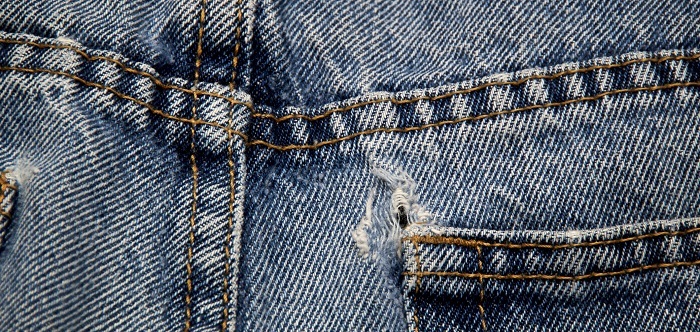

Sewing has fallen out of favour in the world of ready-made clothing. But it is important to understand the use and existence of sewing. Sewing is the craft of attaching and fastening objects such as cloth or other materials together by using stitches. In this process, needles and thread are widely used. In ancient times, people used to give orders for sewing their cloth material into shirts, pants, etc. Although, with time, the invention of machines reduced the hand work, sewing is still in existence.

In sewing, topstitching is a row of stitching that is used to give finishing to the edges of the cloth material. Top stitching enhances the appearance and provides strength to the garment. Sewing is generally done by hand with the help of a sewing machine. Top stitching helps decorate the garment and improves its functionality. Top stitching is commonly used for sportswear, denim, and active wear.
Top stitching gives a smooth finish and is also used for decorative purposes. Contrast threads are widely used to decorate the garment. Top stitching is also used for practise purposes. One of the most common applications for top-stitching is in seams, where it increases their durability.
Decorative and functional top-stitching can be done on seams in the following ways
Top-stitching on both sides of the seam
Top-stitching on one side of the seam line
Some other uses for top-stitching
Top-stitched tucks
Top-stitching on top of the box pleats, inverted pleats, and side pleats
Top-stitching around zippers
Top-stitching on waistbands
Mainly, there are five different types of topstitched seams. They are as follows
Only one topstitched seam
double-stitched top seam
Welt seam
Lapped seam
Slot seam
Top stitching can be done in various styles. Some very common top stitching styles are briefly discussed below.
Sewing a regular seam involves some steps. These steps are based on some conventional seam stitching rules. Below is the process of sewing the top stitching seam
First of all, you need to decide which side of the seamline you want to top stitch.
Iron the seam with the seam allowance pointing in the right direction. The best way to do so is to iron it in a single direction from the face of the seam.
Then, trim the seam allowance layer by 14 or half the seam allowance width.
After doing this, it is now time to give the garment its finishing. Finish the top allowance layer, or the untrimmed layer, by cleaning it. This can be done with an overedge stitch.
At this point, insert pins from the right side of the garment. Put this horizontally along the seam.
Now that you’ve completed this, mark the topstitch line with masking tape or a straightforward hand basting stitch.
Topstitch down the seamline while working on the face side, catching the layers of the seam allowance underneath. As much as possible, space your topstitching equally apart from the seam.
After this, remove the hand basting.
Press the topstitched seam in the direction the stitching was applied to finish it.
The tuck seam is a bit different from the regular top-stitched seam. In this style, the step of actually sewing the seam is avoided. Instead, the cloth is simply folded and topstitched straight through the seam allowance and all layers of the garment.
Start by folding one of the seam edges toward the seamline (or designated seam allowance width). To make the fold line crisp, iron this fold.
Place the folded piece, aligning the fold to the corresponding seamline, on top of the opposite seam edge. In this instance, having the lines printed on each cloth piece is helpful. If the seamlines have not been indicated, you can still locate them using a gauge pointer or ruler.
Put a few pins in the horizontal direction to maintain the folded layer’s alignment with the matching seamline.
Hand stitch the garment, including the seam allowance underneath, through all layers.
Topstitch all layers of the garment and the seam allowance underneath, about 14” away from the folded edge, to finish the tuck seam. Use a seam ripper to eliminate the hand basting after stitching.
Iron the final topstitching in the direction it was sewn to finish.
Top stitching is very important while sewing seams. It stabilises the edges of the garment. By following the sewing techniques properly, it is easy to top stitch a seam. To give your garments a nice finish and to decorate them as you see fit.